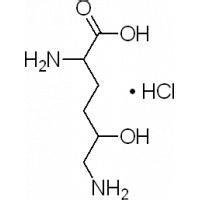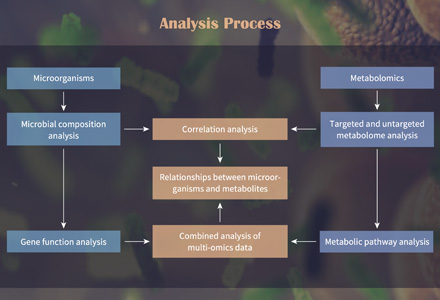5-Hydroxylysine Analysis Service
Submit Your InquiryLysine (Lys) is an indispensable amino acid nutrient essential to the human body. 5-Hydroxylysine is the most important one. Because the content of lysine in cereal foods is very low and it is easily destroyed and lacked during processing, it is called the first limiting amino acid. 5-Hydroxylysine can prevent bone loss (which can cause osteoporosis), promote human development, enhance immune function, improve central nervous system function, and treat migraine and abdominal cramps related to premenstrual syndrome and menarche Pain, improve the absorption and utilization of food protein, and achieve balanced nutrition. 5-Hydroxylysine plays an important role in the body weight of humans and animals, but little is known about its role in plant cells or animal cells under different growth conditions. Fortunately, high performance liquid chromatography or gas chromatography can be used to detect and quantify specific amino acids based on their physical and chemical properties. Combined with mass spectrometry, specific amino acids such as 5-hydroxylysine in different plant or animal samples can be effectively determined.
 Figure 1. 5-Hydroxylysine chemical structure.
Figure 1. 5-Hydroxylysine chemical structure.
Applications of 5-Hydroxylysine Analysis
- Recognize the role of 5-hydroxylysine in plant and animal metabolism
- Determine plant pressure
- Promote animal growth
- Explore the application of 5-hydroxylysine in plants and animals
Advantages of Our 5-Hydroxylysine Analysis Service
Service Workflow
Our newly developed sample preprocessing method provides efficiency, recovery rates consistently exceeding 85%, and environmental protection. Sample preprocessing at Creative Proteomics complies with in-house standard operation procedures (SOPs), maximizing homogeneity between samples.
 Figure 2. 5-Hydroxylysine analysis service workflow.
Figure 2. 5-Hydroxylysine analysis service workflow.
Quantitation method: external reference method or isotope-labeled internal standard method
Mode: MRM, capable of simultaneously detecting more than 1000 MRM ion pairs
Precision: ≤10-9g
Positive/Negative polarity switching time: ≤20 ms, allowing for the acquisition of Q1/Q3 MRM transition mass spectra in both ionization modes from a single LC-MS/MS run.
Analysis content:
- Standard curve drawing
- Raw data preprocessing
- Absolute quantitation of L-histidine
- Differential metabolites screening
- Optimal analyses such as KEGG pathway analysis and hierarchical clustering
Sample Requirements
- Blood/plasma: 500ul/sample
- Urine: 1ml/sample
- Tissue: 200mg/sample
- Cells: 1x107/sample
- Feces: 500mg/sample
- Sample storage and transportation: Store in liquid nitrogen or -80°C, and transport on dry ice
- Number of biological replicates: At least 6 biological replicates for plant samples, and at least 10 biological replicates for animal samples
Delivery
- Experimental procedure
- Parameters of liquid chromatography and MS
- Extracted mitochondria and purified protein sample
- Purity analysis report
- MS raw data files and MS data quality checks
- Metabolites quantification data
- Custom analysis report
We can provide customers with sample processing, testing, analysis, and other professional technical services, and work with our customers to improve product quality. From sampling to analysis, we provide one-stop services. Our experienced team guarantees to produce credible results at a competitive price.
References
- Dr. Gosuke Hayashi, Ryosuke Sakamoto, et al, 2‐Oxazoline Formation for Selective Chemical Labeling of 5‐Hydroxylysine. CHEMISTRY AN ASIAN JOURNAL, 2018, 10(5): 1138-1141.
- Constantinos G. Zarkadas, James A. Rochemont, et al, Determination of methylated basic, 5-hydroxylysine, elastin crosslinks, other amino acids, and the amino sugars in proteins and tissues. Analytical Biochemistry, 2020, 160(2): 251-266.







